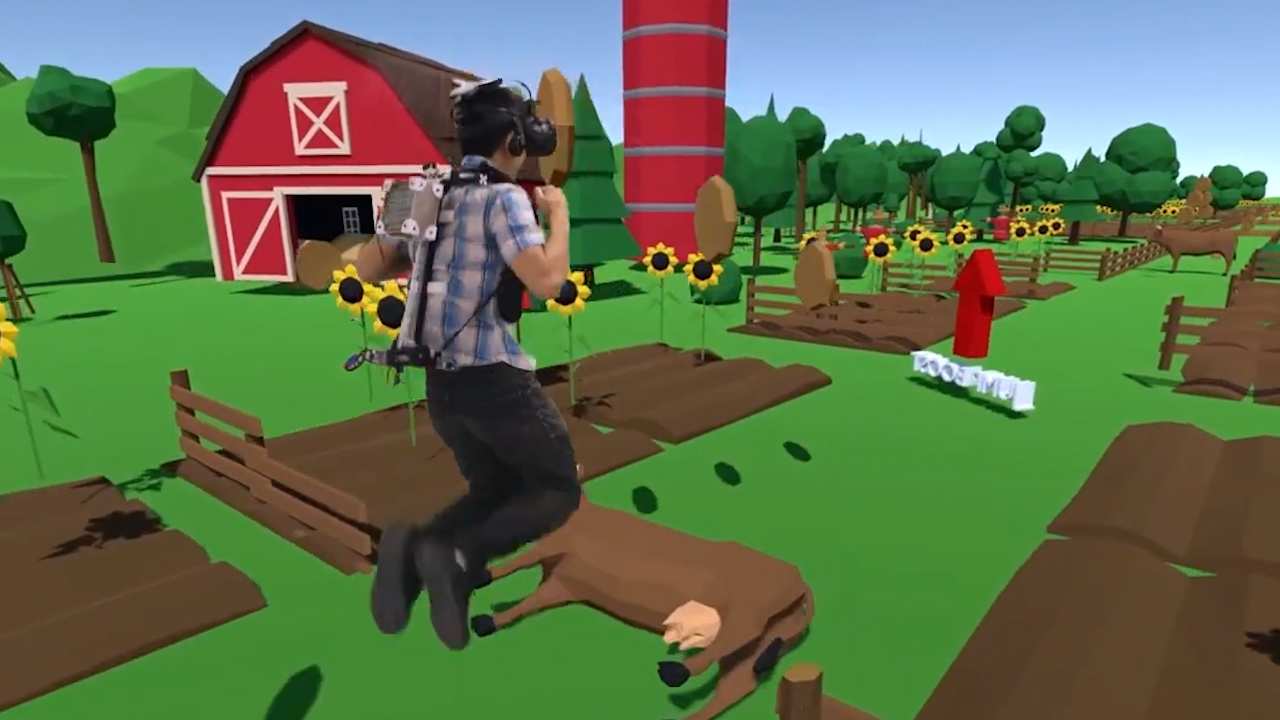“Jump up and down and move it all around.”
Pedro Lopes, an Assistant Professor in Computer Science at the University of Chicago who focuses on integrating interfaces with the human body by exploring the interface paradigm that supersedes wearables, wants to make jumping in VR a more enjoyable experience.
Lopes and his team created a mechanical backpack called JumpMod that can help enhance the sensation of falling and jumping in the virtual world by moving your weight up and down through simulating forces on your body.
JumpMod can also simulate the feeling of being strapped to a roller coaster as it makes that first big drop or riding in the backseat of a car as it makes an especially sharp turn.
The mechanical backpack features a 2-kilogram weighted cube attached to a linear rail, which propels the user up and down at different speeds depending on what they’re experiencing in VR. This is how the team was able to create a system that replicates the sensation of physical motion.
The JumpMod utilizes a belt drive and an encoded mechanism for quick and precise movements. Its motor can be controlled using a Seeeduino XIAO nRF52840 BLE Sense microcontroller development board, which also provides wireless connectivity to give you the ability to jump without worrying about getting tangled up in wires.
JumpMod detects when a user jumps using an HTC VR headset and HTC’s lighthouse V2 tracking system and calculates the user’s jump sequence based on their height and descent.
The system then estimates your weight’s movement in relation to your jump phase to provide a more accurate and authentic experience. This includes movements of your weight and the motion of going up or down, which delivers the feeling of jumping at different heights. The system can even adjust the hardness and softness of your landings.
User studies were performed to test the system’s accuracy using a dozen participants. The results of the study revealed that the algorithm was 94% accurate in identifying all four jump phases.
In a demonstration video posted on YouTube, one user can be seen jumping and then says, “It feels like I jumped higher.”
Lopes and his team then focused on analyzing how the user’s perception of their jumps was affected by the use of the JumpMod. The system was able to generate varying sensations based on the types of jumps that the participants performed. The results of this study revealed an impressive 81% accuracy.
Another study was then conducted to analyze how a user’s perception of the jumps was affected when they played a VR game using the JumpMod. The game featured various elements such as wind and power-ups that increase the user’s jumping abilities. The results of the study showed that the effects of the device on the users’ perception of the jumps were significantly different when they used the backpack and a VR headset.
The team members of the company are currently working on developing additional sensing systems and actuators that could be used to enhance the experience further.
Lopez recently presented his work at the Conference on Human Factors in Computing Systems in Hamburg, Germany where he talked more about how their JumpMod system could be used to improve training through an enhanced haptic feedback experience. You can read more about JumpMod here.
Feature Image Credit: New Scientist via YouTube
The post Mechanical Backpack Makes Jumping In VR More Fun appeared first on VRScout.







